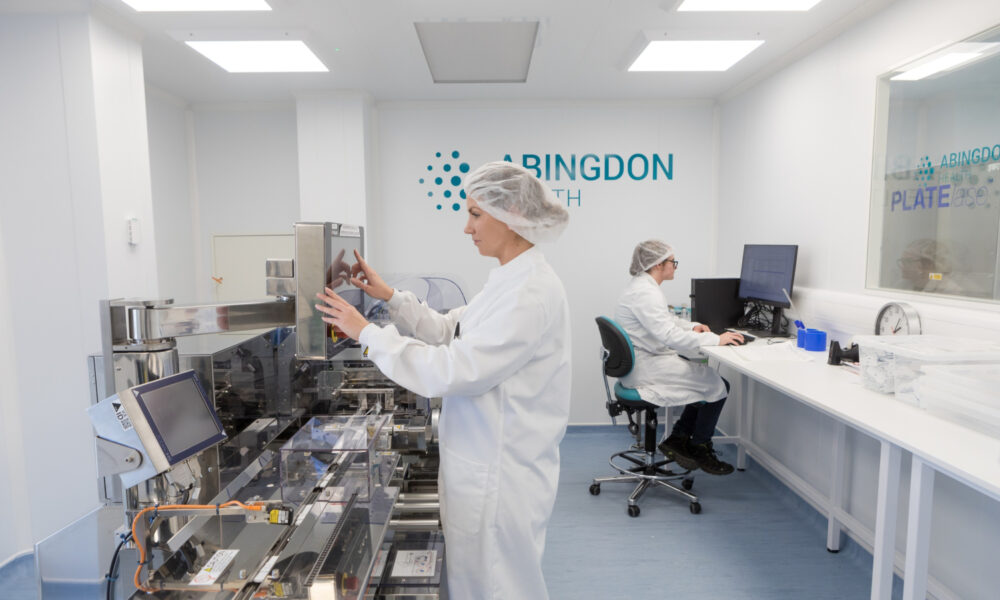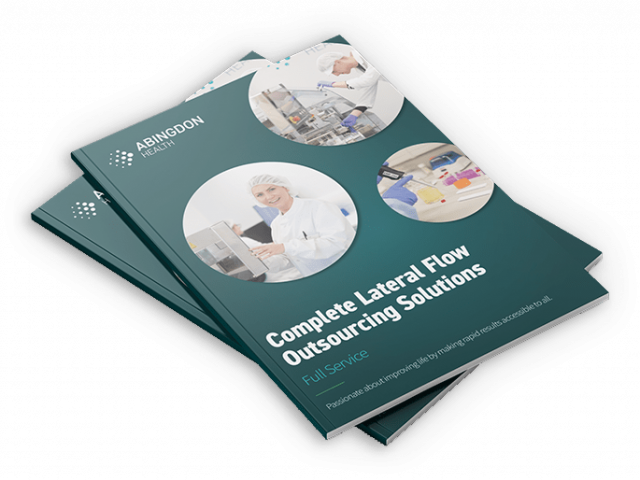Material Selection Considerations During Product Development

Materials: What Are We Talking About?
Strip Development: Factors When Considering Materials Choice
It’s Not Just About the Strip… Consider the Other Components Early
Key Takeaways
Material selection should be a critical element of any lateral flow development process. In this blog, Dr Mark Jones, COO of leading lateral flow CRO and CDMO Abingdon Health, outlines some key considerations in selecting materials that are robust and fit for purpose.
Materials: What Are We Talking About?
One of the key elements is to identify your components early on in a development project. As part of any feasibility process the key objective is to get to a Proof of Concept and, in practise, this means creating a prototype device that can be further refined during the optimisation and scale-up stages of lateral flow development.
Quite rightly, much of the early-stage development focuses on chemistry and building a test strip; identifying reagents that work in combination on a nitrocellulose strip. We’ll cover off this in the next section, but it is also important to consider the type of test – whether it be a clinical self-test, clinical point of care test, animal health test – and look at the other components required.
Strip Development: Factors When Considering Materials Choice
At the outset of any project Abingdon Health’s supply chain team will be actively involved in the selection of materials process. The reason being those early-stage decisions are critical and can have far reaching implications further down the line when you are scaling-up or manufacturing your lateral flow device. For example, trying to swap out a too expensive gold label further down the development pathway can be extremely expensive, and time consuming, and something we want to avoid.
During the early stages of a development project the R&D team will naturally be focusing on test performance and looking to bring together the right combination of buffer, test line (e.g. antigens / antibodies / label type (e.g. gold)) and control line reagents, nitrocellulose and sample pads) to ensure the test hits the required performance criteria. However, this performance also needs to be calibrated with the ability for these materials to be sourced and used at scale.
At scale means a range of things from cost, scalability, surety and robustness of supply. Each has a number of factors to consider, so let’s address them:
Firstly, cost. It is key to have – upfront – let’s say difficult discussions with your suppliers of critical components early on in the process. One of lateral flow technology’s great strengths is its cost competitiveness and this can be greatly undermined by a reagent that provides great performance but is expensive and ultimately makes the product too expensive for the market. It is important to understand the pricing of materials, any price breaks, how those prices will change year on year (or can you get a fixed price, even for a period) and other conditions of supply. One key factor is whether your suppliers are willing to enter into a supply agreement and this will not only give certainty on cost, but also deal with some of the factors below, such as surety of supply.
Secondly, scalability, surety and robustness of supply. Key questions should include:
- Does the supplier make large batches of reagent on a consistent basis?
- Do they work in a controlled environment?
- Has the manufacturing process been validated?
- Does the supplier work with standard operating procedures (“SOPs”)?
- What quality standard does the company work to (i.e. ISO9001) and are they certified?
- Can the materials be used in a commercial product, or are they just available on a research use only basis?
- Is the material quality controlled?
- Do they provide a certificate of analysis? (importantly, does this meet your requirements)
and lastly, is your supplier financially robust; a key consideration in the uncertain economic environment we are currently operating in.
Again, a supply agreement will address many of these factors, but as you can imagine, an integrated approach to R&D and the building of a supply chain for critical components is key. The certificate of analysis and potential variation in the reagents being provided needs to be accounted for within the development process to ensure that this “natural variation” does not cause issues for the final product.
Incoming quality control (QC) at your CRO or CDMO partner’s organisation is also important. At Abingdon, we build in a rigorous level of incoming QC to ensure any components that we receive meet the required specification. This is not just critical during the development process, but it is the basis for successful, robust manufacturing.
It’s Not Just About the Strip… Consider the Other Components Early
The above section focused very much on the development of a test strip. However, the other components of a lateral flow test should also be considered early on in the process and the more work done in these early stages to build a robust supply chain will reduce risk and stress further down the line.
Taking a clinical self-test as an example, as part of developing a working prototype during feasibility. there are a number of components that should be identified and chosen: housings, buffer bottles, sample collectors (e.g. oral fluid swabs or blood collectors), lancets for finger prick blood tests, etc. Again, preparation is key to ensure the “right” components have been identified and many of the factors highlighted above such as cost and surety of supply are just as important here.
Looking at a couple of other key component examples, the housings used to encase the lateral flow strip can have major implications in performance and these may be seen as “generic components” where cost is the major determination of which housing to choose. However, the quality of housings does vary considerably and, therefore, going for the cheapest supply may actually lead to more problems in the future in terms of quality, robustness and consistency of housing. Another area where detailed consideration is needed is lancets; there are a wide variety of lancets available (e.g. needle or blade lancets, with variable penetration depths) and the devil is in the detail. For instance, lancets are regulated under the IVDR medical devices regulations as a Class IIa sterile medical device and, therefore, any handling of lancets (e.g. dividing up shipments from a bag of 100 lancets to 2 lancets for a single test) needs to be performed in a sterile, controlled environment.
Key Takeaway
In summary, as part of any material selection in the early stages of an R&D process consideration should not only be given to technical performance but also the ability for these materials to be used at scale.
The factors to consider include, among other things, cost, surety of supply, robustness of supply, scalability, supplier financial stability and any regulatory factors.
At Abingdon, our supply chain team are actively involved in the early stages of all projects to assist the R&D team in reaching decisions on the components to be incorporated into a working prototype. For more information on how Abingdon Health can support your product’s journey from idea to commercial success, please contact a member of our team to discuss this subject in confidence.

